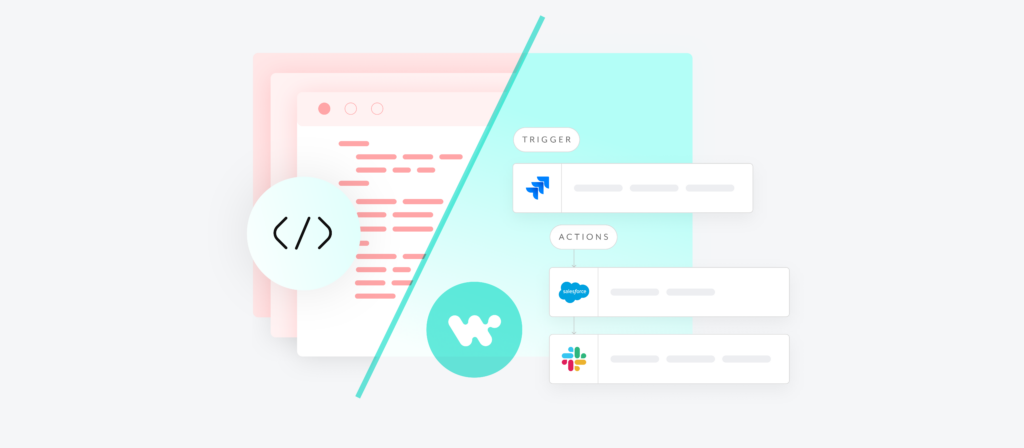For years, MuleSoft rode high on the strength of its API-led integration model. But in the 2025 Gartner Magic Quadrant for iPaaS, MuleSoft is no longer even on the map.
How did a legacy Leader lose its footing?
The short answer: the world changed, but MuleSoft didn’t. Gartner’s latest analysis makes it clear that MuleSoft’s once-promising architectural playbook – built on reuse, abstraction, and rigid API layers – has become a liability in today’s fast-moving enterprise landscape. Across a four-part series, we unpacked Gartner’s critique and the real-world pitfalls IT leaders are experiencing with MuleSoft.

The Integration Landscape Has Changed
Learn why MuleSoft is no longer an iPaaS Leader – and what it reveals about the future of integration, automation, and enterprise orchestration.
Here’s what we learned
1. The API-Led Model Became Overhead
In Part 1 we examined how MuleSoft’s prescriptive approach – mandating Experience, Process, and System APIs for every use case – adds complexity without always delivering value. Gartner warned that this “one-size-fits-all” model leads to unnecessary decomposition, sluggish delivery, and inflated cost structures.
Read: Rethinking MuleSoft’s API-Led Model: Costly Overhead or Strategic Advantage?
2. Rigid Architecture = Runaway Costs
In Part 2 we saw how undisciplined use of MuleSoft’s architecture bloats infrastructure and budgets. Teams applying the full three-tier model – even where it’s not needed – create sprawl, degrade performance, and burn cycles just to keep integrations running.
Read: How Undisciplined API Architecture Leads to Ballooning Costs
3. Reuse Promised More Than It Delivered
In Part 3 we tackled the myth of reuse. MuleSoft sells reusable APIs as a path to efficiency –but Gartner calls that “a good outcome, but a bad goal.” In practice, reuse often slows teams down with versioning challenges and coordination burdens.
Read: Why MuleSoft’s Reuse-First Model Rarely Pays Off
4. It Requires a Team You Probably Don’t Have
In Part 4 we dug into the talent trap. MuleSoft isn’t just complex – it demands a niche workforce of Java experts, certified specialists, and heavyweight partners. Gartner confirms what many leaders are experiencing: without that deep bench, delivery slows, backlogs grow, and costs skyrocket.
Read: The Skills Gap No One Talks About
The Bigger Picture: From Integration to Orchestration
As Gartner’s report highlights, the future of integration isn’t API-led – it’s outcome-led. Businesses don’t just need connections between systems. They need orchestrated, intelligent workflows that can adapt, scale, and deliver measurable impact. That means fewer brittle APIs and more orchestration-first strategies that empower broader teams.
Platforms like Workato are purpose-built for this shift – offering decoupled runtime, composable recipes, and a low-code experience that lets IT move faster without adding headcount or complexity.

Moving on from MuleSoft?
Whether you’re actively switching or just feeling blocked by Salesforce stagnation, our experts are here to help. Schedule a free consultation, demo, and TCO comparison today.
Why It Matters Now
Being dropped from the Magic Quadrant isn’t just a signal – it’s a shift. The integration world is moving beyond traditional middleware. The new winners will be those who embrace orchestration, prioritize outcomes, and democratize automation across the enterprise.
Explore the Full Series:
IT Leader’s Required Reading – Breaking Down Gartner’s Take on MuleSoft
- Part 1: Rethinking MuleSoft’s API-Led Model: Costly Overhead or Strategic Advantage? – Why MuleSoft’s API-led model isn’t right for every integration
- Part 2: Architecture Without Restraint: How Undisciplined API Architecture Leads to Ballooning Costs – Why undisciplined use of architecture leads to high costs for the organization
- Part 3: Why MuleSoft’s Reuse-First Model Rarely Pays Off – Why chasing reuse is often a distraction from real outcomes
- Part 4: The Skills Gap No One Talks About – How talent shortages quietly derail projects
